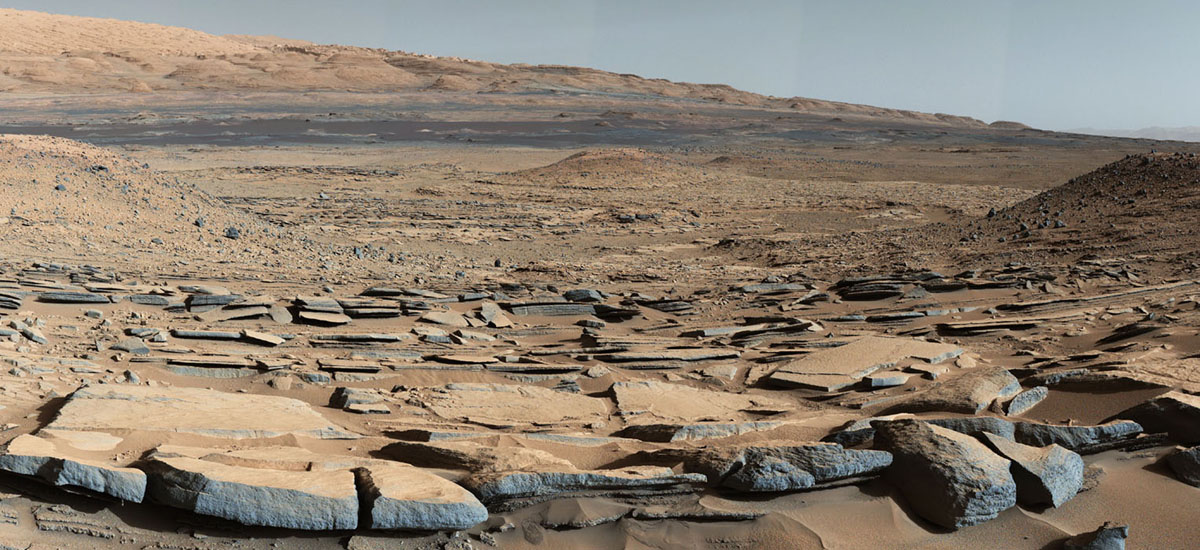
The question as to whether or not we are alone in the universe has fascinated humanity throughout most of its history. In addition to driving many of our mythologies and stories, it has also motivated many of us, myself included, to pursue sciences like astronomy in the first place. The unambiguous discovery that life has arisen elsewhere in the universe independently of Earth would, without question, be one of the greatest discoveries in the entire history of science.
The planet Mars, in particular, has long been a focus in the quest for extraterrestrial life. Potential Martian life has figured prominently in much of our social consciousness, for example, the late 19th Century American amateur astronomer Percival Lowell (whose estate would eventually fund the discovery of Pluto) popularized the idea that Mars was peopled by a dying civilization that built a planet-wide network of “canals” that distributed a declining water supply. Much of our science fiction, especially earlier stories, featured Martian life in some form or other, sometimes malevolent as in the classic H.G. Wells novel “The War of the Worlds,” and sometimes more benign.

The more optimistic views of a thriving Martian ecosphere were dashed rather considerably by the flyby of NASA’s Mariner 4 mission in July 1965, which among other things revealed a stark cratered landscape, although more recent missions have shown that the overall picture is far more complex than that. Various experiments conducted on Martian soil by the twin Viking landers in 1976 did not reveal any convincing evidence of biological activity, however, the Viking orbiters, and various missions since then, have revealed that the Martian surface at one time contained significant amounts of water. Findings by the rovers Spirit, Opportunity, and Curiosity over the past decade and a half have confirmed that, early in its history, Mars had numerous lakes and seas on its surface. Much of that water has either evaporated into space and/or is now below the surface in frozen form, and indeed there is some spacecraft evidence of the existence of subsurface aquifers. Since life – at least, “life as we know it” – needs water to survive, it is certainly conceivable that some forms of life existed on Mars during that watery era billions of years ago but is no longer present. Even if, as would seem likely, that life never evolved beyond microscopic size, the verification that such life indeed arose and existed would still be of monumental scientific importance.
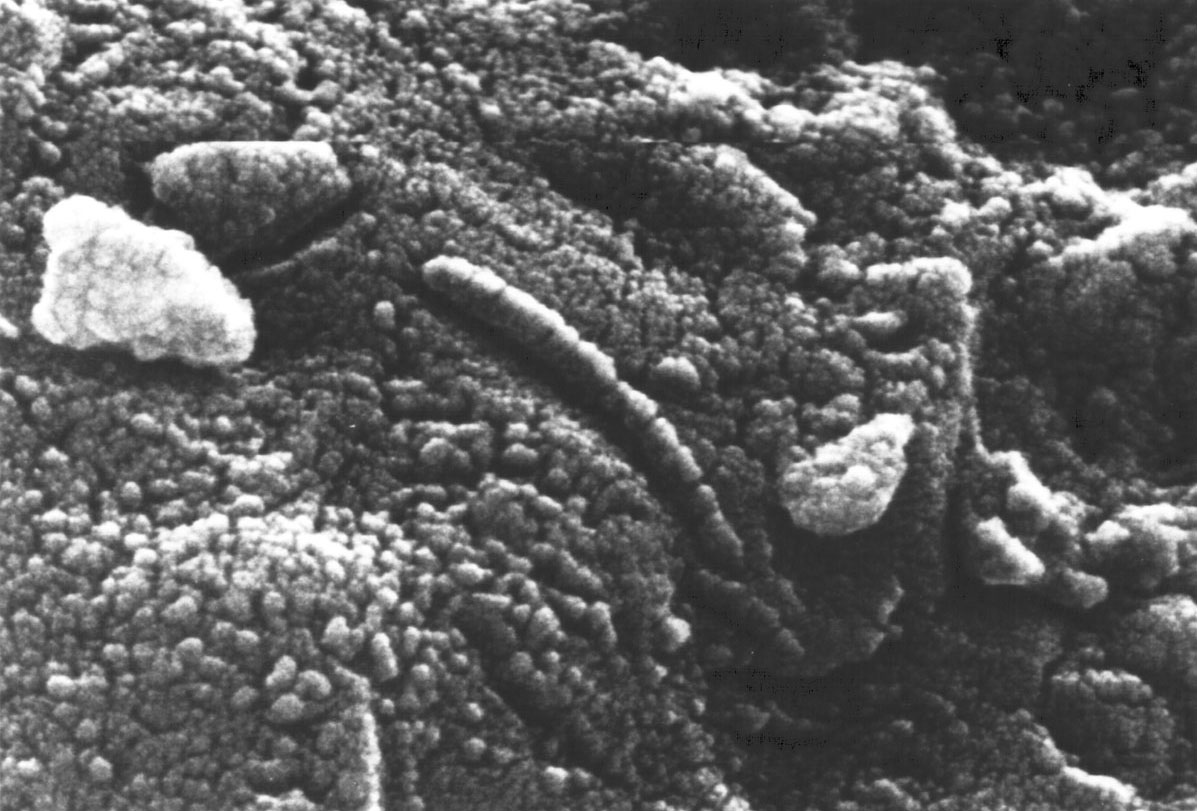
The first strong pieces of evidence that Martian life had indeed existed at one point came from what at face value might seem an unlikely source: Earth itself. Over the age of the solar system, numerous large objects would strike Mars from time to time, some with enough force to eject surface fragments off Mars entirely into interplanetary space – this being due both to Mars’ relatively thin atmosphere as well as its lower surface gravity than Earth’s. These fragments would subsequently orbit the sun as small asteroids until at some point – millions of years in the future – some of them would occasionally encounter Earth and fall to the surface as meteorites. Such an object could be identified due to the fact that the isotopic composition of its materials would match that measured in the Martian soil by surface probes (beginning with the Viking landers in 1976) and while this place of origin could not, for obvious reasons, be positively identified until after such probes had been to Mars, even prior to that it was obvious that the composition of these meteorites was different from that of more “typical” meteorites. The earliest “Martian meteorite” to be collected fell near the town of Chassigny in northeastern France on October 3, 1815, and as of now slightly over 220 meteorites have been identified as having come from Mars.

On August 7, 1996, a team of scientists led by David McKay of NASA’s Johnson Space Center announced that they had detected various signs of evidence of prehistoric Martian life in the Martian meteorite ALH 84001, a 1.9-kg achondrite meteorite collected in the Allan Hills region of Antarctica in December 1984. Among the evidence cited by McKay’s team was the existence of apparent “microfossils” of bacterial organisms a few tens of nanometers in size, similar to – albeit much smaller than – terrestrial bacteria (although perhaps not significantly smaller than bacteria that existed on Earth during its early natural history). Among other forms of evidence, the team cited the existence of several specimens of organic molecules known as “polycyclic aromatic hydrocarbons,” or PAHs, the production of which is usually associated with biological activity. While each of the various forms of evidence could be produced by non-biological means, McKay’s team argued that the totality of all the evidence combined pointed to a biological origin.
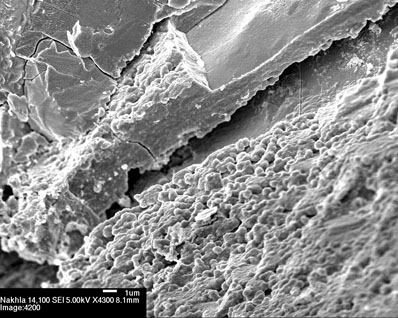
The specific origin of the meteorite ALH 84001 itself figures into the overall story. Overall it has been dated as being somewhat over 4 billion years old – in other words, shortly after the formation of Mars itself – although the specific sections of ALH 84001 that contain the putative biological evidence are somewhat younger, about 3.6 billion years old – roughly the same era during which significant water was present on Mars’ surface (and during which life conceivably could have existed). The impact that blasted ALH 84001 from the Martian surface seems to have occurred around 17 million years ago, and it fell to Antarctica approximately 13,000 years ago. Although there is probably no way this can be confirmed at present, there is evidence to suggest that it might have come from the vicinity of Eos Chasma, the southern portion of the Valles Marineris (Mars’ “Grand Canyon”).
It essentially goes without saying that the announcement by McKay’s team generated a large amount of discussion, debate, and controversy. During the years since then, several scientists have pointed out that the “microfossils,” while intriguing, are not necessarily proof of biological structures, and that similar structures can be produced by other natural, non-biological means. Similar arguments can also be made about the various other forms of evidence that McKay’s team cited, such as the presence of PAHs. The overall consensus has been that the case for proving a biological presence in ALH 84001 has not been met.
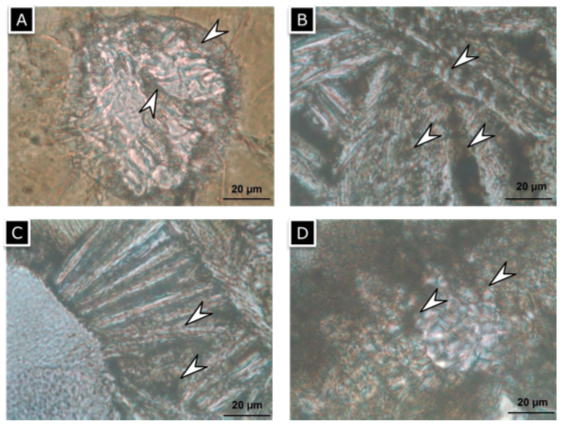
In 2010 McKay and other team members announced that continued analysis of ALH 84001 and two additional Martian meteorites – one of which is the famous Nakhla meteorite that fell on Egypt in 1911 – with modern instruments not available in the mid-1990s has revealed more compelling evidence for a biological presence in these meteorites, including the presence of “mat”-like structures similar to those that were produced by ancient bacterial life forms on Earth. Although the case for Martian biology in these meteorites could still not be considered proven, it could nevertheless be considered as being stronger, and even though McKay passed away in 2013, analysis by other team members and other scientists is ongoing.
A new contribution to this overall discussion came out last year when a team of Hungarian scientists led by Ildiko Gyollai at the HAS Research Centre for Astronomy and Earth Sciences in Budapest announced that their examination of another Martian meteorite retrieved from Allan Hills – ALH 77005, retrieved in 1977 – shows that it contains new evidence of biological activity, including filamentary structures indicative of iron-oxidizing bacteria. Some of the structures appear to be due to fossilized bacteria itself, while others appear to be chemical alterations to the surrounding rock produced by the bacteria.
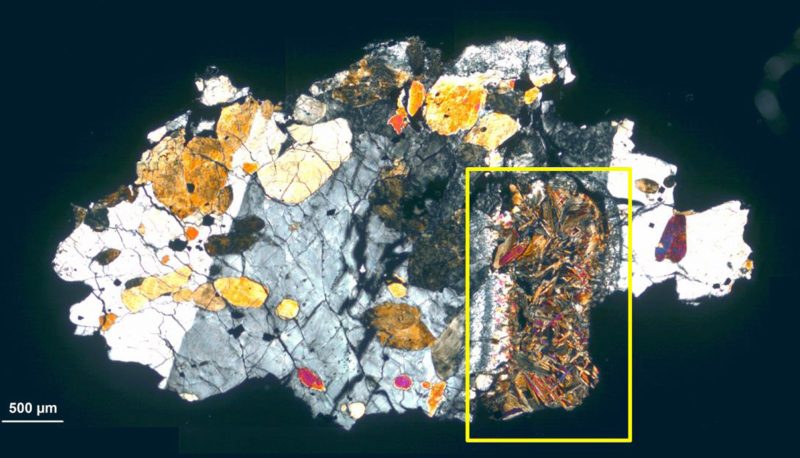
As intriguing as all of this evidence might be, it still cannot be considered conclusive at this time. When it comes to something as monumental as the existence of indigenous life beyond Earth, the famous dictum attributed to the late planetary scientist Carl Sagan, i.e., “extraordinary claims require extraordinary evidence,” holds. It should also be kept in mind that in such instances, the burden of proof is on the positive, i.e., it must be proven by direct evidence, not just by eliminating other potential explanations and then asking “what else can it be?” It may be that, short of actual living organisms, evidence strictly from meteorites may not be enough to meet this burden of proof, and direct analysis of Martian soil and rocks will be necessary to establish the presence of Martian life, if indeed it exists, or has existed in the past. If its mission is successful, NASA’s just-launched Perseverance rover may well be an important step in this process. (Meanwhile, it perhaps should be stated that all of the meteorites that have been studied in this endeavor have been thoroughly examined to the point where the possibility of contamination by terrestrial life forms has been eliminated.)
Regardless of the final disposition of the existence, or non-existence, of biological activity in ALH 84001 and other Martian meteorites, the excitement and resultant discussion generated a new wave of interest in the possibility of Martian (and overall extraterrestrial) life. Indeed, in 1998 NASA established the NASA Astrobiology Institute – which has now been transformed into a more globally-focused collaborative effort – as a direct result of the interest, both scientific and popular, generated by the McKay team’s announcement. Perhaps some “Ice and Stone 2020” participants may one day play a role in furthering this discussion and establishing once and for all whether or not we are alone in the universe.
More from Week 32:
This Week in History Comet of the Week Free PDF Download Glossary
Ice and Stone 2020 Home Page


